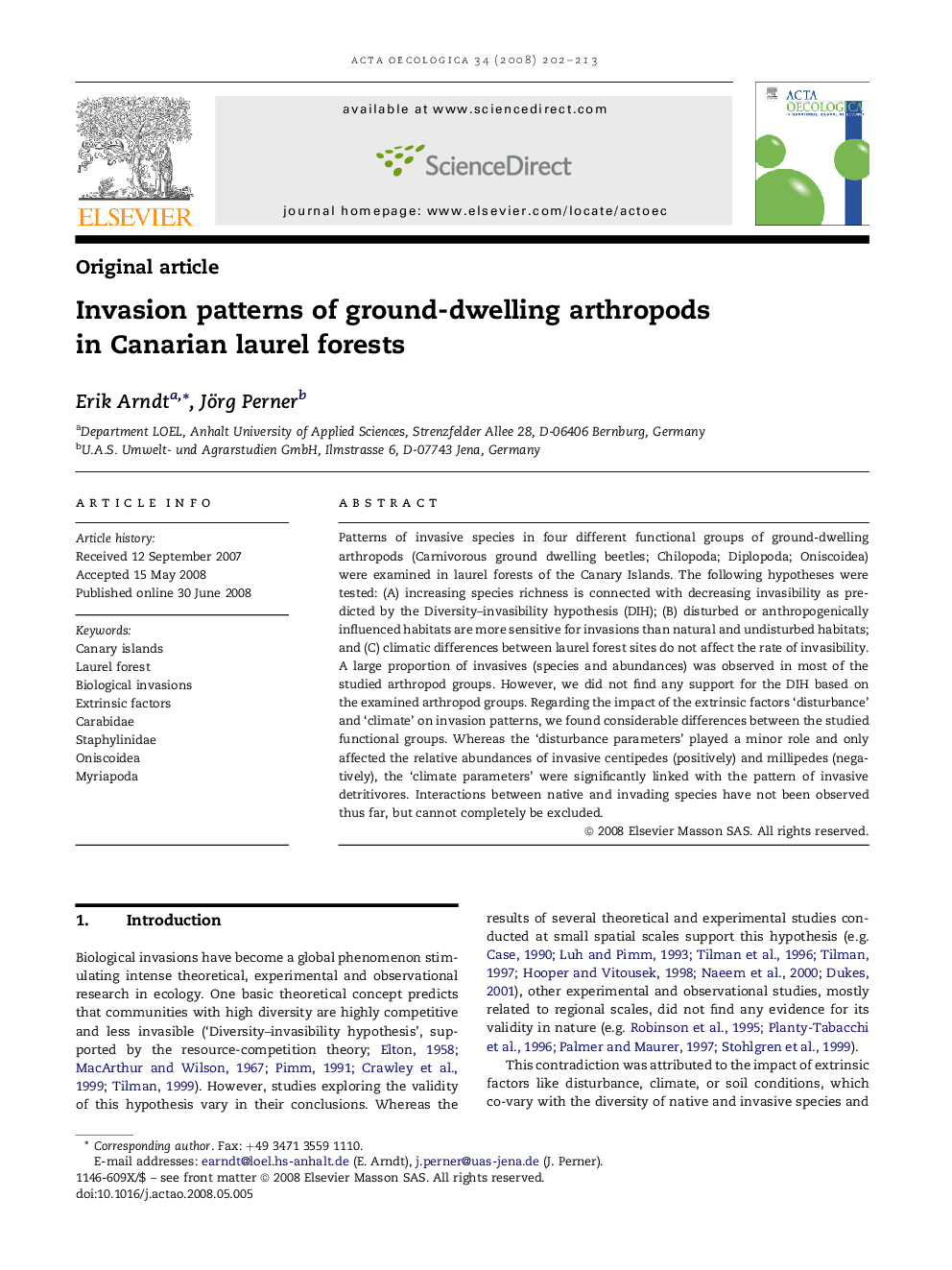| Article ID | Journal | Published Year | Pages | File Type |
|---|---|---|---|---|
| 4381524 | Acta Oecologica | 2008 | 12 Pages |
Patterns of invasive species in four different functional groups of ground-dwelling arthropods (Carnivorous ground dwelling beetles; Chilopoda; Diplopoda; Oniscoidea) were examined in laurel forests of the Canary Islands. The following hypotheses were tested: (A) increasing species richness is connected with decreasing invasibility as predicted by the Diversity–invasibility hypothesis (DIH); (B) disturbed or anthropogenically influenced habitats are more sensitive for invasions than natural and undisturbed habitats; and (C) climatic differences between laurel forest sites do not affect the rate of invasibility. A large proportion of invasives (species and abundances) was observed in most of the studied arthropod groups. However, we did not find any support for the DIH based on the examined arthropod groups. Regarding the impact of the extrinsic factors ‘disturbance’ and ‘climate’ on invasion patterns, we found considerable differences between the studied functional groups. Whereas the ‘disturbance parameters’ played a minor role and only affected the relative abundances of invasive centipedes (positively) and millipedes (negatively), the ‘climate parameters’ were significantly linked with the pattern of invasive detritivores. Interactions between native and invading species have not been observed thus far, but cannot completely be excluded.
